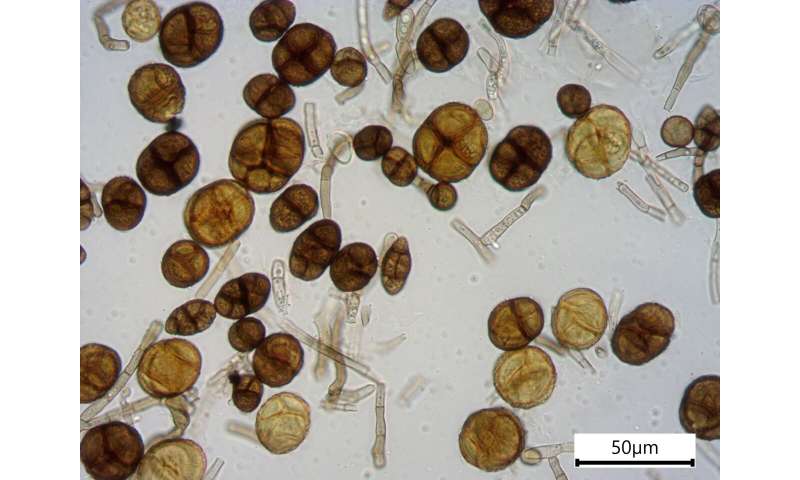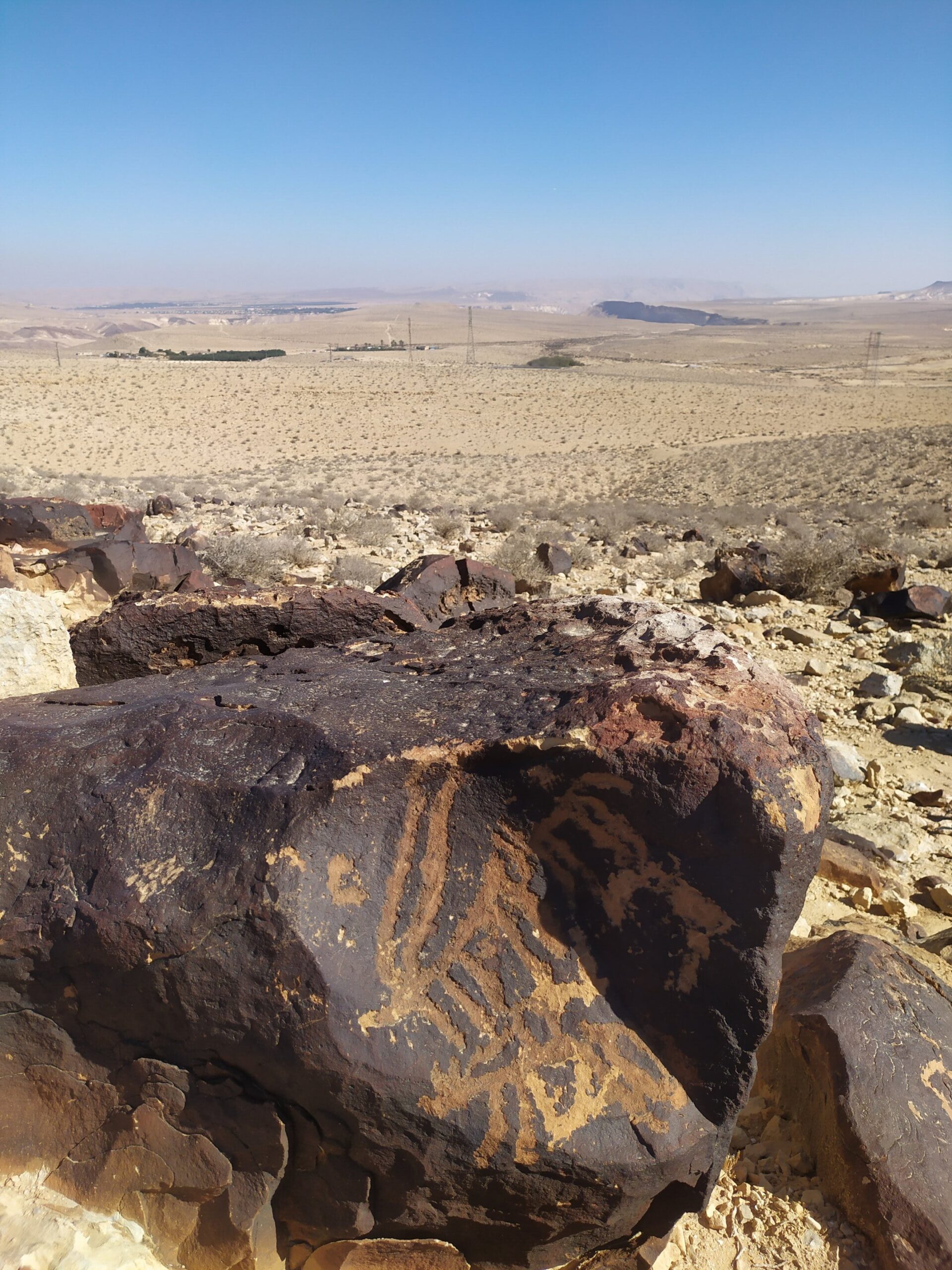Negev Petroglyphs of Animals. Credit: Laura Rabbachin, INTK, Academy of Fine Arts, Vienna
The Negev Desert in southern Israel is known for its unique rock art. Since at least the third millennium BCE, hunters, herders, and traders roaming the Negev have left thousands of engravings (petroglyphs) on the rocks. These figures are usually carved into desert varnish: a thin black layer on limestone rock that forms naturally. Many of them depict animals such as ibex, goats, horses, donkeys, and tame camels, but abstract forms also occur.
Now a study has been published in Frontiers in fungal biology has revealed that the rock art is home to a community of unusual specialist fungi and lichens. Unfortunately, these species could pose a serious threat to the rock art in the long term.
“We show that these fungi and lichens can significantly contribute to the gradual erosion and damage of the rock art,” said Laura Rabbachin, a Ph.D. student at the Academy of Fine Arts Vienna in Austria, and the study’s first author. “They can secrete different types of acids that can dissolve the limestone in which the rock art is carved. In addition, the fungi can penetrate and grow into the stone grains, causing additional mechanical damage.”
-

Petroglyph with human figure. Credit: Laura Rabbachin, INTK, Academy of Fine Arts, Vienna
-

Negev Petroglyphs with Abstract Forms. Credit: Laura Rabbachin, INTK, Academy of Fine Arts, Vienna
-

The landscape around the petroglyphs in the Negev desert. Credit: Laura Rabbachin, INTK, Academy of Fine Arts, Vienna
Extreme conditions
Rabbachin and colleagues took samples from a petroglyph site in the central-western Negev highlands, where rainfall averages just 87 mm per year, and temperatures on rock surfaces can reach 56.3 °C in summer. The researchers scraped samples from desert varnish next to petroglyphs, from rocks without desert varnish, and from soil near the sampled rocks. They also left petri dishes open near the rocks to collect airborne spores.
The authors identified collected fungi and lichens using two complementary methods. First, they repeatedly cultured fungal material or spores from rocks or soil on plates containing one of two different growth media until they obtained pure isolates for DNA barcoding. Second, they directly sequenced fungal material present in rock or soil samples, without first culturing them. The latter method can detect strains that do not grow in culture.
Few but destructive species on rock paintings
Both methods showed that the diversity and abundance of species on rock art rocks was low compared to the species in the soil, suggesting that few species are able to withstand the local extremes of drought and temperature.
DNA barcoding of cultured isolates revealed that the rock art harbored multiple species of fungi within the genera Alternaria, Cladosporium, and Coniosporium, while direct sequencing further detected multiple species in the genera Vermiconidia, Knufia, Phaeotheca, and Devriesia. All species except Alternaria and Cladosporium are so-called microcolonial fungi, known to thrive in hot and cold deserts worldwide. Lichens in the genus Flavoplaca were also abundant.
-

Fungal culture: Alternaria sp. NS4. Credit: Laura Rabbachin, INTK, Academy of Fine Arts, Vienna
-

Fungal culture: conidia of Alternaria sp. NS1. Credit: Laura Rabbachin, INTK, Academy of Fine Arts, Vienna
-

Fungal culture: Cladosporium limoniforme. Credit: Dr. Irit Nir, Ben Gurion University of the Negev
“Microcolonial fungi are considered very dangerous for stone artifacts. For example, they are seen as a likely cause of the deterioration of stone cultural heritage in the Mediterranean,” Rabbachin said.
“Lichens are also known to cause rock degradation and thus pose a potential threat to stone cultural heritage.”
In the surrounding soil and air, the researchers found mainly diverse, cosmopolitan fungi, which are known to survive the harsh desert conditions by producing drought-resistant spores.
Documenting endangered rock art is a necessity
Can anything be done to protect the rock art from the slow but destructive work of the observed microcolonial fungi and lichens? This is unlikely, the authors warned.
“These natural weathering processes cannot be stopped, but the speed of the weathering process depends strongly on whether and how the climate will change in the future. What we can do is monitor the microbial communities over time and, more importantly, document these valuable works of art in detail,” said Rabbachin’s academic supervisor, Prof Katja Sterflinger, the lead author of the study.
More information:
Diversity of fungi associated with rock art in the Negev Desert, Israel, and their possible role in bioweathering, Frontiers in fungal biology (2024). DOI: 10.3389/ffunb.2024.1400380
Quote: Desert-loving fungi and lichens pose deadly threat to 5,000-year-old rock art (2024, July 5) Retrieved July 5, 2024, from https://phys.org/news/2024-07-fungi-lichens-pose-deadly-threat.html
This document is subject to copyright. Except for fair dealing for private study or research, no part may be reproduced without written permission. The contents are supplied for information purposes only.
